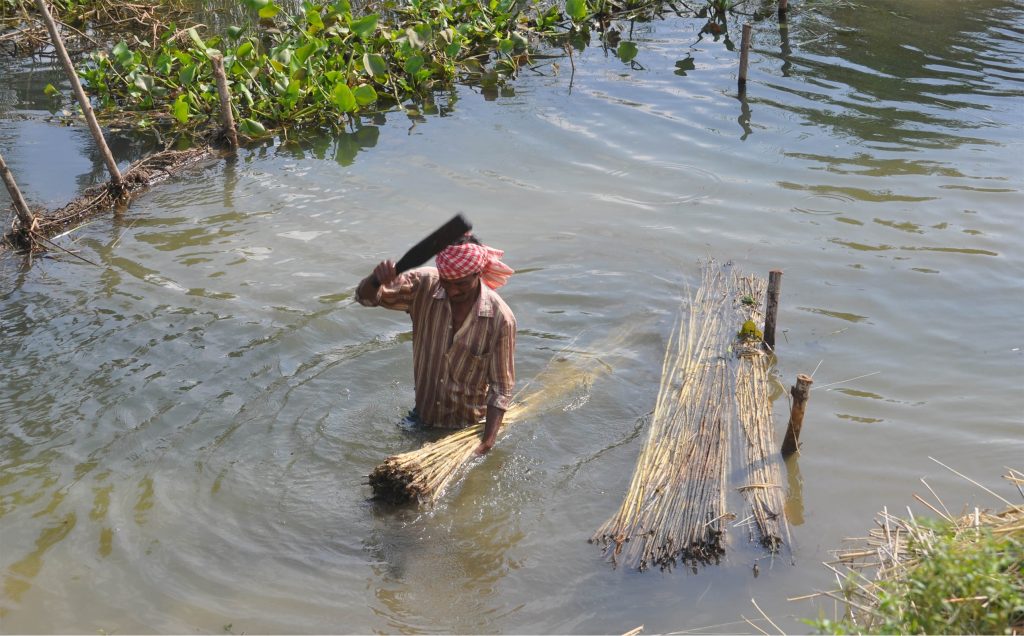Kendrapara: Rampant use of plastic coupled with lack of government support has led to a drastic fall in jute cultivation, which has been a major livelihood source for the residents in this district. According to a report, jute cultivation is sharply declining in the district as farmers are not showing much interest in jute due to increasing demand for plastic and lack of sponsorship on part of the state government.
Barring a few farmers, many have withdrawn from jute cultivation as in the absence of government sponsorship they need to spend more to buy seeds from the open market. As a result, jute cultivation in the district has dropped by 90 per cent this year compared to last year, farmers said.
Reports said Kendrapara district, which lies on the coastline of the state, is known as an industrially backward district. It does not have any mine and adequate infrastructure for establishment of agro-based industries.
There was a time when the district was known for jute cultivation and a major hub for jute trade. Sensing the potential, the state government had established a jute research centre at Jajanga under Sadar block to promote cultivation of the cash crop and make the farmers self-reliant.
After its establishment, the research centre produced three new varieties of jute seeds and helped farmers become financially independent through better harvests. The research centre now exists only on paper.
Farmer leader Bidhu Bhusan Mohapatra said jute cultivation was carried out on 2,152 hectares in 2005. It was extended to 8,000 hectares in 2010 as the climate was conducive for the crop. This prompted the state government to establish a jute research centre on 46 acres at Jajanga on the outskirts of the town. The centre started developing various types of jute seeds following which jute cultivation was extended to 14,000 hectares in 2014.
However, the situation worsened as the Centre stopped selling jute seeds to farmers for last four years. Farmers said the district requires 30 quintals of seeds for jute cultivation annually but received only two quintals of seeds in 2018. That was the last time the Centre provided seeds to farmers. The sales counter at the research centre has now stopped selling jute seeds. Now, farmers interested in jute cultivation have to buy seeds from open market at exorbitant prices, resulting in a 90 per cent drop in jute cultivation this year, the farmer leader added.
Haladhar Dhal of Derabish said farmers are turning away from jute cultivation due to lack of government sponsorship. He said the state and Centre have announced they would promote jute sacks instead of plastic sacks to discourage plastic use. However, despite a favourable
atmosphere for jute cultivation, farmers have failed to get any support. This has forced them to take up cultivation of other crops, he said.
Niranjan Parida, a farmer from Kansar panchayat who has cultivated jute on 12 acres this year, said the soil in Kendrapara district is ideal for jute cultivation. Earlier, he was earning good amount by transporting his harvest to Kolkata. However, things have changed as he was forced to buy jute seeds from the open market as seeds were not available with the agriculture department.
Saraswati Samal of Paripangara village said a jute-based industry was managed by 60 women self-help groups here. Now, they purchase jute from outside due to lack of availability of the fibre in the local market.
When contacted, Siba Prasad Mallick, Deputy Director, Agriculture, said the Centre and the state government have been laying stress on jute cultivation and have given subsidies on seeds and other implements. Jute cultivation in the district will be promoted from next year, he added.
PNN
